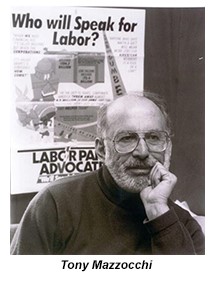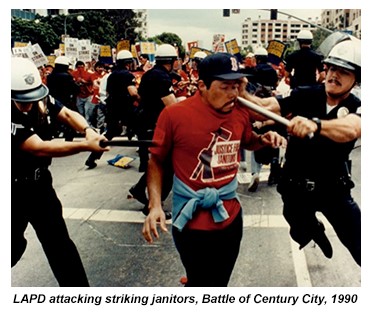| June 12 Fifty thousand members of the Amalgamated Meat Cutters and Butcher Workmen employed in meatpacking plants walk off their jobs;  demands include equalization of wages and conditions throughout U.S. plants – 1904 demands include equalization of wages and conditions throughout U.S. plants – 1904(No Contract, No Peace: A Legal Guide to Contract Campaigns, Strikes and Lockouts: This book is a must-have for any union or activist considering aggressive action to combat management’s growing economic war against workers. No Contract, No Peace! updates information contained in the first edition, entitled Strikes, Picketing and Inside Campaigns, to include reference to recent union activities and NLRB decisions that have affected the labor relations environment. Schwartz’s familiarity with labor and employment law combines with his activist spirit to provide innovative yet practical tips for mounting and maintaining meaningful campaigns designed to build union and workers’ power.) The U.S. Supreme Court invalidates two sections of a Florida law: one required state licensing of paid union business agents, the other required registration with the state of all unions and their officers – 1945
June 13
June 14 The first commercial computer, UNIVAC I, is installed at the U.S. Census Bureau – 1951 June 15
Battle of Century City, as police in Los Angeles attack some 500 janitors and their supporters during a peaceful Service Employees Int’l Union demonstration against cleaning contractor ISS. The event generated public outrage that resulted in recognition of the workers’ union and spurred the creation of an annual June 15 Justice for Janitors Day – 1990
June 16
The National Industrial Recovery Act became law, but was later to be declared unconstitutional. It established the right to unionize, set maximum hours and minimum wages for every major industry, abolished sweatshops and child labor. The Wagner Act, in effect today, was approved two years later to legalize unionization – 1933 Inacom Corp., once the world’s largest computer dealer, sends most of its 5,100 employees an email instructing them to call a toll-free phone number; when they call, a recorded message announces they have been fired – 2000 June 17
Mary Harris “Mother” Jones leads a rally in Philadelphia to focus public attention on children mutilated in the state’s textile mills. Three weeks later the 73-year-old will lead a march to New York City to plead with President Theodore Roosevelt to help improve conditions for the children – 1903
Twelve trade unionists meet in Pittsburgh to launch a drive to organize all steelworkers. It was the birth of the United Steelworkers of America (then called the Steel Workers Organizing Committee). By the end of the year 125,000 workers joined the union in support of its $5-a-day wage demand – 1936 Nine firefighters are killed, eight more injured when a large section of Boston’s Hotel Vendom collapses on them. The firefighters were performing cleanup when the collapse occurred, having successfully fought a fire at the luxury hotel earlier in the day – 1972 June 18
—Compiled and edited by David Prosten |







